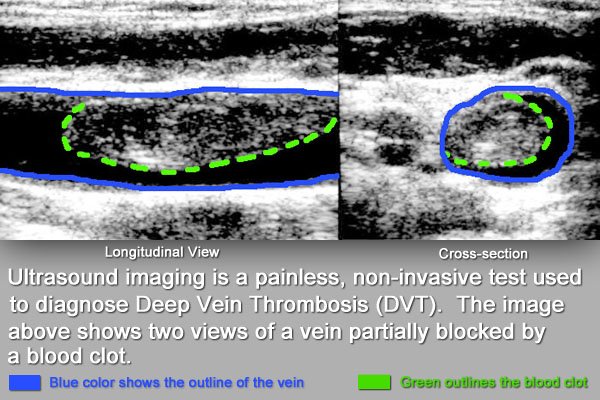What is Deep Vein Thrombosis (DVT)?
When a blood clot forms in the deep veins of the body, it is called deep vein thrombosis, or a DVT. DVT occurs most commonly in the legs; although it can occur anywhere in the body, such as the veins in the abdomen, or around the brain. It is estimated that almost 1,000,000 people in the United States are affected by DVT every year.
What are the symptoms of DVT?
Symptoms of DVT can be mild to severe and involve the foot, ankle, calf, whole leg, or arm. The classic symptoms of DVT are: pain, swelling, discoloration, and warmth of the affected limb. If a clot breaks loose and travels to and lodges in the lungs, it is called a Pulmonary Embolism (PE). A pulmonary embolism is a potentially life-threatening complication of DVT. It is estimated that between 60,000-100,000 Americans die each year as a result of DVT/PE.
How is a DVT diagnosed?
Ultrasound imaging is the preferred modality to diagnose a DVT.
If I experience symptoms, can Totality provide a diagnosis and treatment referral?
Yes. Totality provides ultrasound imaging services for all vascular conditions including DVT and if it is determined that you do have a DVT, we will refer you to a specialist for immediate treatment.
What can I do to prevent a DVT?
Stay active, exercise daily if possible. Don’t smoke. Maintain an ideal body weight. Know your risk factors. Know your family medical history, especially if a close family member has had blood clotting problems. Women on birth control or hormone replacement therapy or who are pregnant should discuss options to avoid DVT with their physician.

